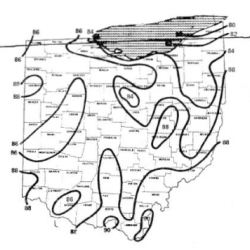Source Institutions
Source Institutions
Add to list Go to activity
Activity link broken? See if it's at the internet archive

In this two-part lesson, learners discover how large bodies of water can serve as a heat source or sink at different times and how proximity to water moderates climate along the coast. The activities' combination of laboratory investigation, map study, and graphing applies different learning styles and provides practice in important science processes.
- Under 5 minutes
- 1 to 2 hours
- $5 - $10 per group of students
- Ages 11 - 14
- Activity, Experiment/Lab Activity, Lesson/Lesson Plan
- English
Quick Guide
Materials List (per group of students)
- Four thermometers
- One container of dark soil and one container of water (The containers should hold equal amounts, and the soil and water should be left out overnight to come to room temperature)
- Two 30-cm rulers
- Masking tape
- Ring stand
- Lamp (at least 150 W) with reflector
- Safety goggles for each group member
- Graph paper
- Figures 3-6
Subjects
-
Earth and Space Science
-
Earth Processes
- Weather and Climate
-
Earth Structure
- Oceans and Water
-
Earth Processes
-
Physical Sciences
-
Heat and Thermodynamics
- Heat and Temperature
- Heat Transfer
-
Heat and Thermodynamics
-
The Nature of Science
-
The Scientific Process
- Conducting Investigations
- Gathering Data
- Formulating Explanations
- Communicating Results
-
The Scientific Process
Informal Categories
- Nature and Environment
Audience
To use this activity, learners need to:
- see
- read
- touch
Learning styles supported:
- Involves teamwork and communication skills
- Involves hands-on or lab activities
Other
Includes alignment to state and/or national standards:
Includes assesments for student learning:
This resource is part of:
Access Rights:
- Free access
By:
- Fortner, Roseanne W. ; Mayer, Victor J.
Rights:
- All rights reserved, R.W. Fortner and V.J. Mayer, 2009
Funding Sources:
- National Science Foundation, 0827983
- National Science Foundation, 0828142
- National Science Foundation, 0827953
- NOAA National Sea Grant
- Office of Naval Research
- National Oceanic and Atmospheric Administration
